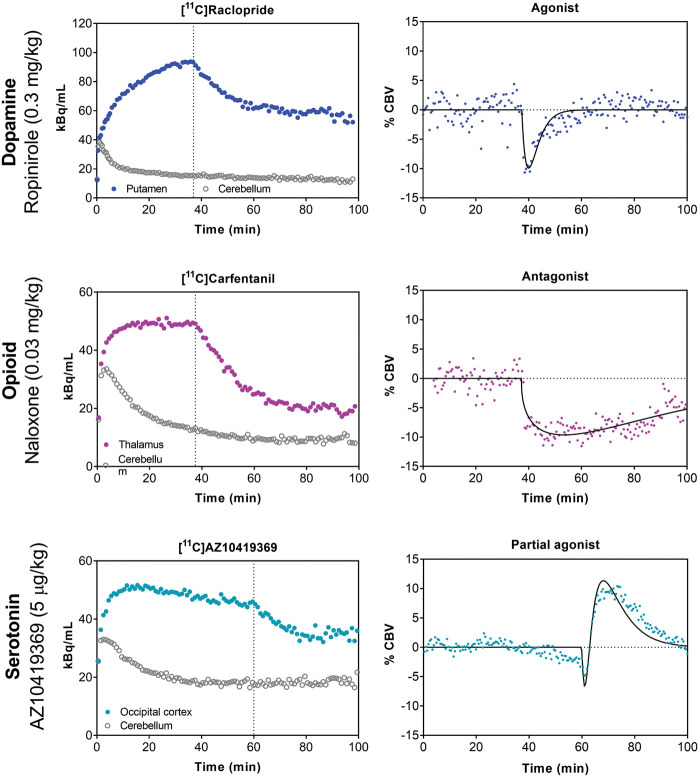Figure 3.
Examples of dynamic timecourses of simultaneous PET and fMRI experiments with pharmacological challenges. Left column: In all three cases, the radiotracer was administered as a bolus-infusion and a within-scan pharmacological challenge was injected at the dotted vertical line. Right column: Simultaneously acquired fMRI signals are shown as percent cerebral blood volume (%CBV). For the dopamine system, the D2/D3 receptor agonist ropinirole was used to displace [11C]raclopride binding and elicited a short-lived negative %CBV response. For the opioid system, the µ-opioid receptor antagonist naloxone was used to displace [11C]carfentanil binding and elicited a longer-lasting negative %CBV response. For the serotonin system, the 5-HT1B receptor partial agonist AZ10419369 was used to displace [11C]AZ10419369 binding and elicited a biphasic %CBV response. Corresponding voxelwise maps to these timecourses are shown in Figure 2.

